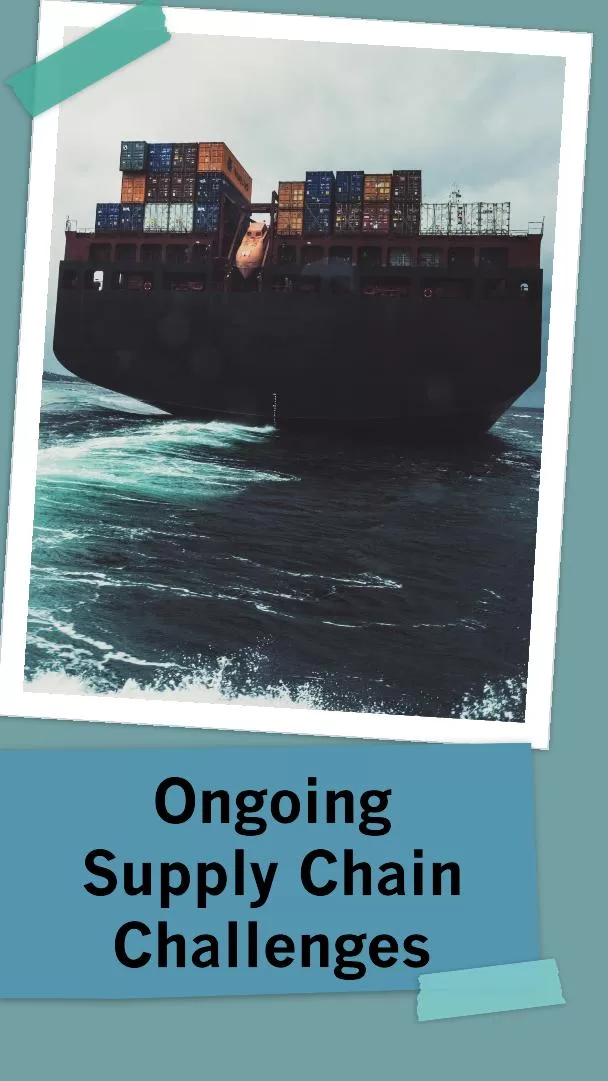The supply chain has faced numerous challenges in recent years, exacerbated by global events such as the COVID-19 pandemic, geopolitical tensions, and natural disasters. Here are some of the key ongoing challenges:

- Supply Chain Disruptions:
- Pandemic Impact: COVID-19 led to factory shutdowns, port closures, and labor shortages, causing significant delays and shortages in various sectors.
- Geopolitical Tensions: Trade wars, tariffs, and sanctions have disrupted international trade flows and created uncertainties in supply chain management.
- Logistics and Transportation Issues:
- Port Congestion: Major ports around the world have faced severe congestion, resulting in long wait times for ships to unload.
- Freight Capacity Shortages: A lack of available shipping containers and trucks has hindered the movement of goods.
- Labor Shortages:
- Skilled Labor: There is a growing shortage of skilled workers in manufacturing, logistics, and transportation.
- Workforce Retention: High turnover rates and the need for better working conditions have impacted the stability of labor supply.
- Raw Material Shortages:
- Semiconductors: The global chip shortage has affected industries ranging from automotive to electronics.
- Other Raw Materials: Shortages in materials like lumber, steel, and plastics have led to increased costs and production delays.
- Increasing Costs:
- Transportation Costs: Rising fuel prices and transportation fees have driven up overall supply chain costs.
- Commodity Prices: Inflation and increased demand have caused spikes in the prices of raw materials.
- Environmental and Sustainability Concerns:
- Carbon Footprint: Companies are under pressure to reduce their environmental impact, which requires significant changes in supply chain practices.
- Sustainable Sourcing: There is an increasing demand for sustainably sourced materials, which can be more expensive and harder to secure.
- Technological Challenges:
- Integration of New Technologies: Implementing advanced technologies such as AI, IoT, and blockchain can be complex and require significant investment.
- Cybersecurity: As supply chains become more digitized, they become more vulnerable to cyberattacks.
- Regulatory Compliance:
- Changing Regulations: Companies must navigate an evolving landscape of regulations related to trade, labor, and environmental standards.
- Customs and Tariffs: Changes in customs procedures and tariff structures can cause delays and increase costs.
- Risk Management:
- Natural Disasters: Events like earthquakes, hurricanes, and floods can disrupt supply chains unexpectedly.
- Political Instability: Political unrest in key manufacturing or shipping regions can cause sudden disruptions.
- Demand Forecasting and Inventory Management:
- Fluctuating Demand: Accurately predicting demand has become more challenging due to rapid changes in consumer behavior.
- Inventory Levels: Balancing inventory to avoid overstocking or stockouts is increasingly complex in a volatile market.
Addressing these challenges requires a multifaceted approach involving better risk management, investment in technology, strategic partnerships, and a focus on sustainability. Companies must remain agile and adaptable to navigate the complex and ever-changing landscape of global supply chains.

Pingback: Oil-Service Providers Say Producers Are Becoming More Cautious